The PermaDesign Weblog, with Nate Downey and Melissa McDonald!
Roof-Reliant Landscaping™ Step 18C: Water Distribution - Drip Irrigation
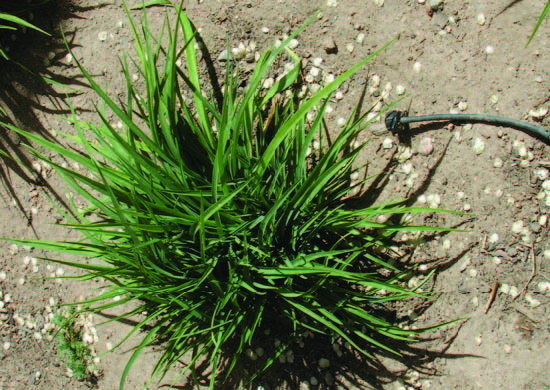
Above: Drip emitters deliver water to plant root zones with very little waste.
Drip Irrigation
Drip irrigation (commonly known as “drip”) directs water right to where plants need it—at their root zones. Using a network of poly-propylene tubing, drip irrigation releases a slow trickle of water through properly placed emitters. As long as this type of irrigation system is properly installed, closely monitored and efficiently maintained, drip is a highly efficient water-delivery method. Drip emitters are often located under mulch, so, with a drip system, very little water is lost due to evaporation. In most cases, drip irrigation is the preferred form of landscape irrigation in New Mexico.
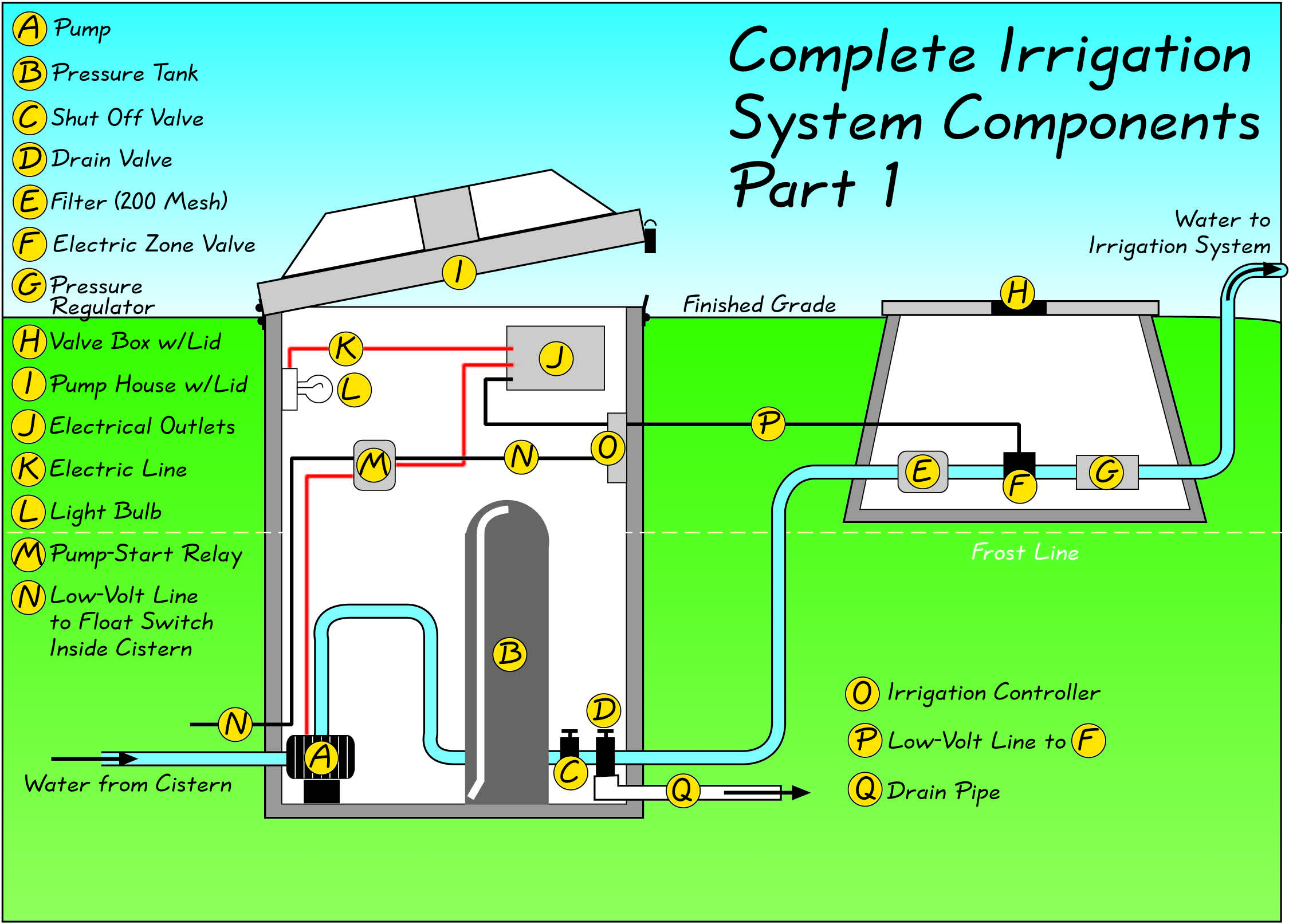
Above: (Part 1) The components of a complete drip irrigation system.
For a more detailed and comprehensive discussion of drip irrigation, refer to Low Volume Irrigation— Design and Installation Guide published by the Albuquerque Bernalillo County Water Utility Authority (and available online from the Office of the State Engineer).
Cistern-related drip irrigation systems generally begin right after the pump lifts water from the cistern into the main water-delivery pipe. The first component that connects to this pipe is typically a pressure tank, which calls for water from your pump whenever water pressure in your system drops below a predetermined level. The pressure tank is an important item because drip irrigation requires reasonably constant water pressure in order to function effectively. For most systems, 15 to 30 PSI is a good pressure-tank setting. For most roof-reliant landscapes, an inexpensive six-gallon pressure tank is all that is necessary.
An inline filter is then connected to the main delivery line (labeled E in Figure 10-5). This small, inexpensive item, is a critical part of any cisternrelated irrigation system. A standard drip irrigation filter in the 150 - 200 mesh range (i.e., between 100 to 75 microns) should be sufficient as long as the filter is regularly monitored and cleaned once a month. During the design and installation of your system, make sure you provide enough “elbow room” so changing and cleaning your filter(s) can be accomplished with relative ease.
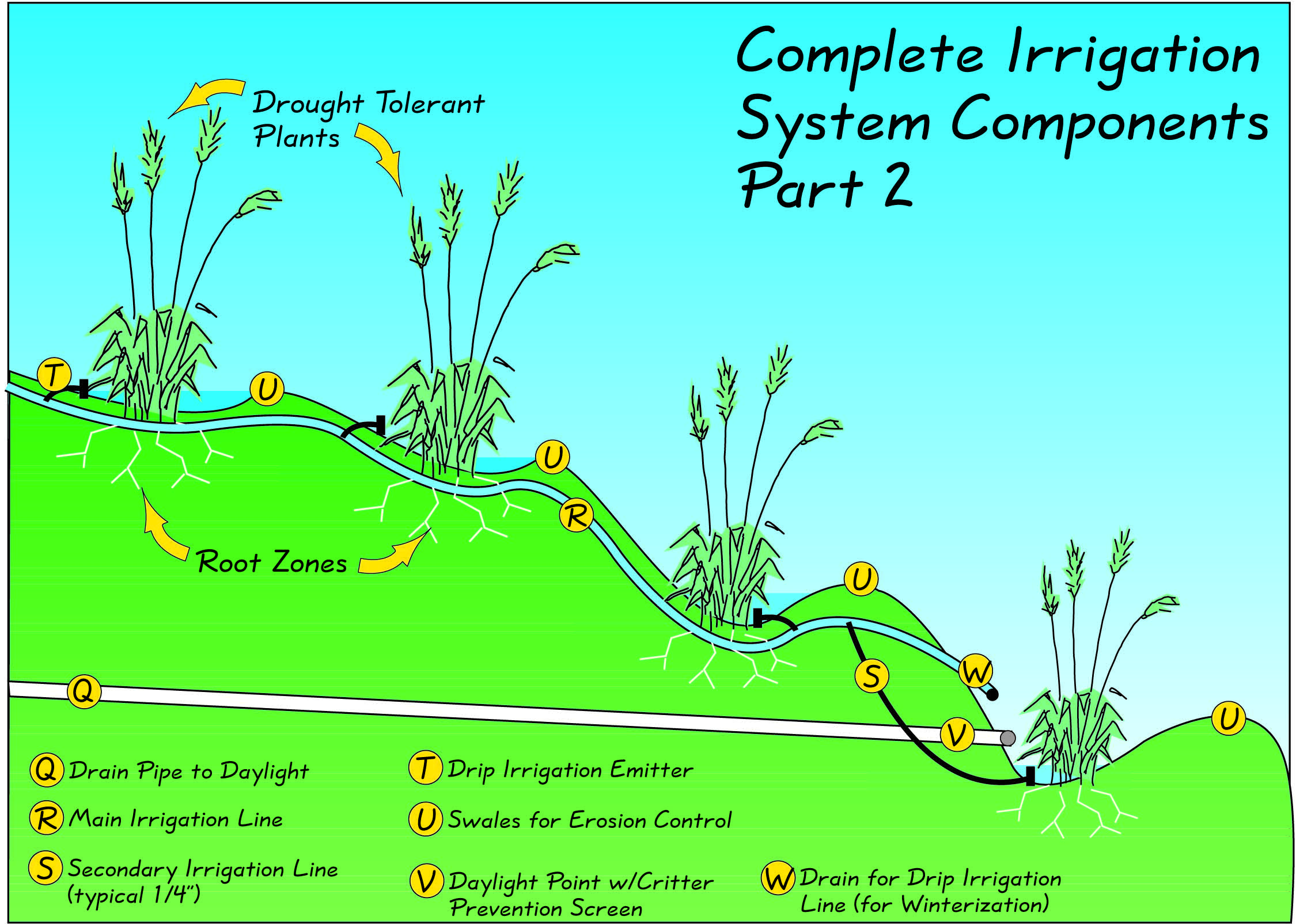
Figure Above: (Part 2): The components of a complete drip irrigation system.
Next in line is a small item called a pressure regulator, labeled G in Figure 10-5. The main role of a pressure regulator is to prevent water pressure from getting too high in your system’s delivery tubes.
If your system includes a frost-proof pump house or a self-draining sump pump, it makes sense at this juncture to install a frost-free hydrant, even if you plan to use drip irrigation exclusively. Frostfree hydrants can be used to water during warm, dry winters and they can be used to spot water in the summer. However, be sure to clearly identify your frost-free hydrant as a source of non-potable water and consider locking the handle. (NOTE: Purple is the Universal Plumbing Code’s (UPC) color for indicating nonpotable water sources.)
This is often a good point at which to create a= place for your system to drain. Most systems need to be drained before the first frost in the fall. The drain and its valve should be located at a lower elevation than all of the components that you wish to empty.
From this point, the distribution pipe will attach to an irrigation valve box (also called a manifold box). Such boxes are installed with their tops flush with grade. Inside you should have one valve for each irrigation zone.
Unless your system is manually operated, each= valve will also be attached to a solenoid that is connected, with low voltage wire, to an irrigation controller. Separate watering zones are recommended for trees, shrubs and perennials, because each type of plant prefers a different watering schedule.
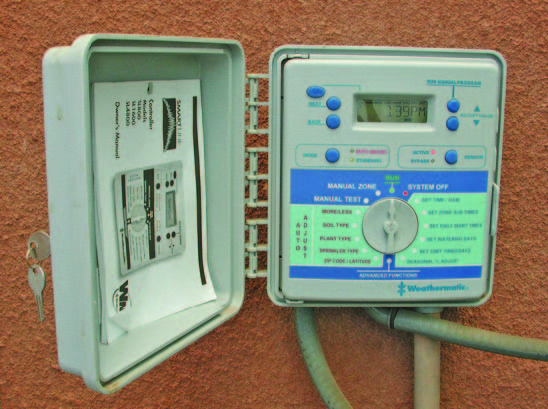
Figure 10-6: An irrigation controller can be programmed to automatically turn each zone of your irrigation system on and off.
After the valve box, delivery pipes are typically converted from rigid PVC pipe to flexible polypropylene tubing. Such tubing typically ranges in diameter from 1/2 to one inch. It can be buried under the soil, but, for ease of access, irrigation tubing is typically tacked to the surface of the soil with landscape staples and covered only by mulch.
Although an irrigation controller is technically an optional item, it is highly recommended to include a controller to automatically turn your drip system on and off. Irrigation controllers range from battery operated one-zone timers to high-tech clocks that offer a wide range of programming options, including controlling your irrigation system from a computer in the house (or halfway around the globe via the internet). An irrigation controller is worth the cost because of the time that it saves you from having to manually run zones from the valve box.
Another optional item is a digital water level meter. These devices provide you with a percentage of water in your cistern. Although some types can be tricky to calibrate when the tank is empty, digital level readers can be installed by the do-it-yourselfer.
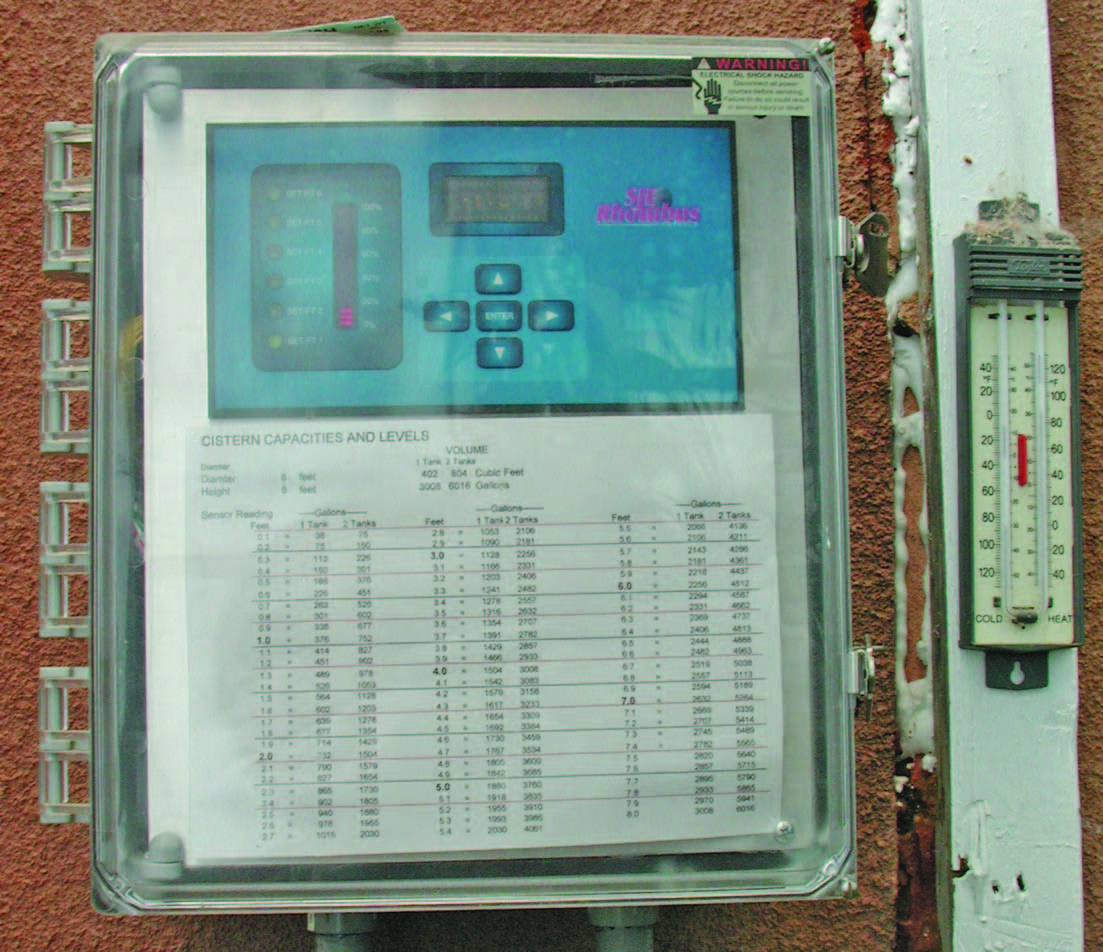
Above: A digital water level meter indicates how much water is in the cistern.
03/01/2016 | (0) Comments










Comments